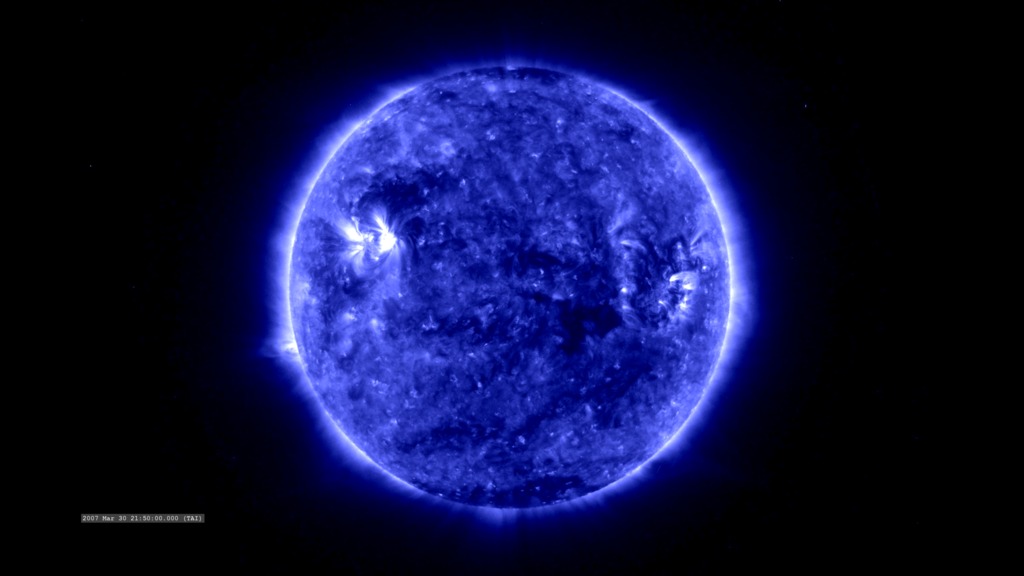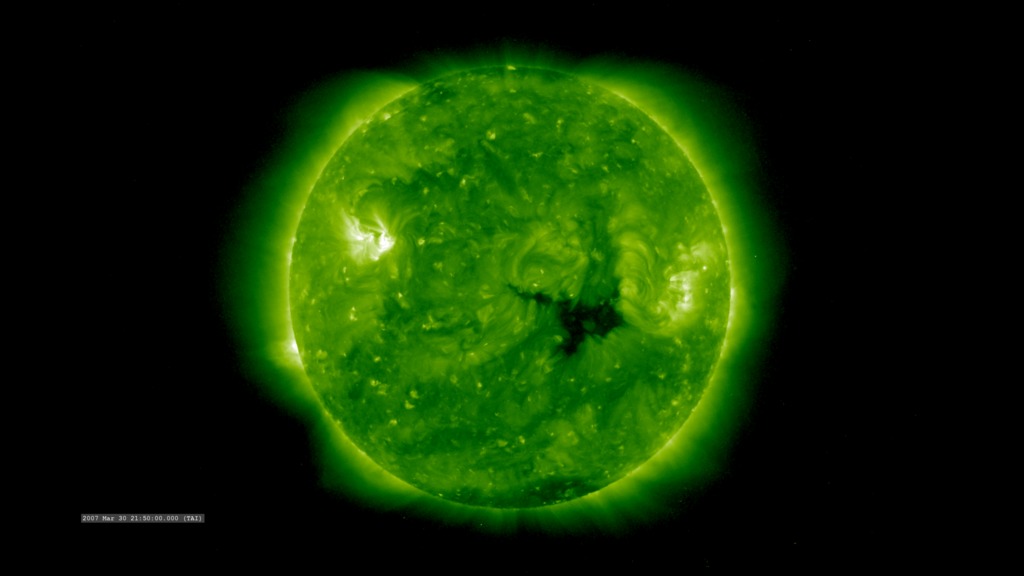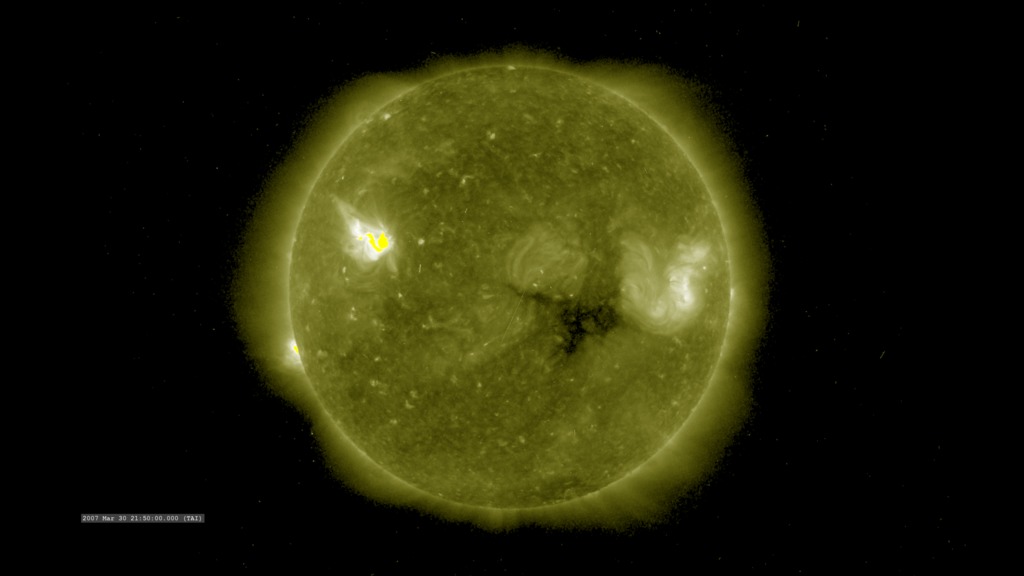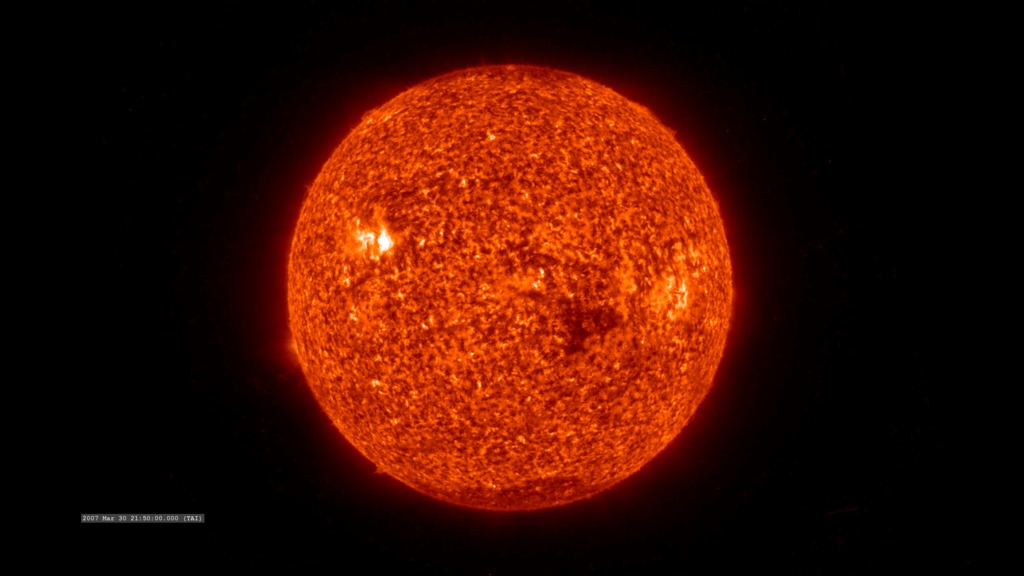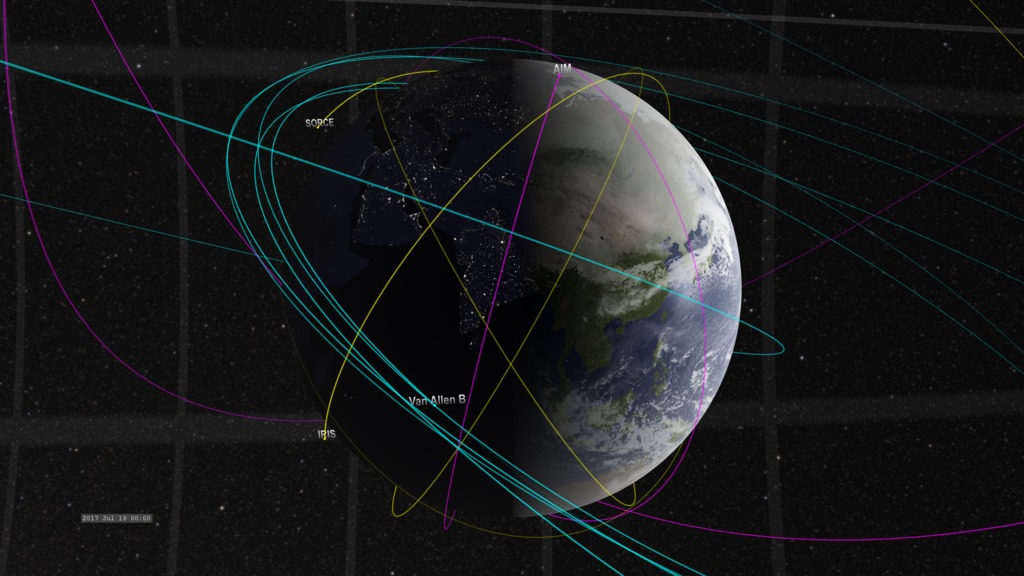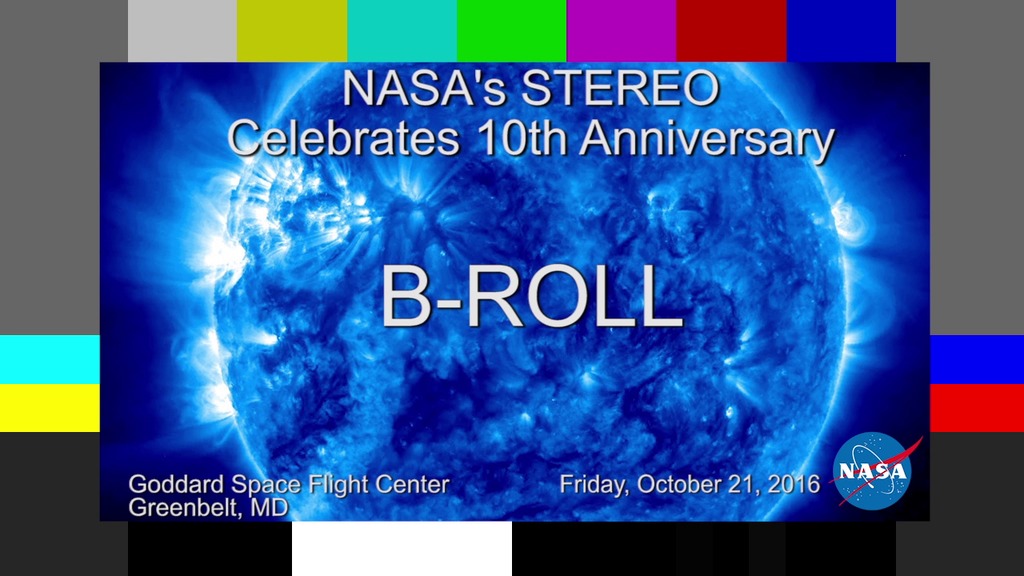STEREO
Overview
STEREO (Solar TErrestrial RElations Observatory) is the third mission in NASA's Solar Terrestrial Probes program (STP). The mission, launched in October 2006, has provided a unique and revolutionary view of the Sun-Earth System. The two nearly identical observatories - one ahead of Earth in its orbit, the other trailing behind - have traced the flow of energy and matter from the Sun to Earth. STEREO has revealed the 3D structure of coronal mass ejections; violent eruptions of matter from the sun that can disrupt satellites and power grids, and help us understand why they happen. STEREO is a key addition to the fleet of space weather detection satellites by providing more accurate alerts for the arrival time of Earth-directed solar ejections with its unique side-viewing perspective.
STEREO Data
STEREO in stereo: Spring 2007 at 171 Ångstroms
Go to this pageRed/Cyan stereo glasses are required to view it properly. || 2007stereo_STEREO_RedCyan_010_EUVI171A_UHD3840.02000_print.jpg (1024x576) [69.0 KB] || 2007stereo_RedCyan_010_EUVI171A_2160p30.mp4 (3840x2160) [451.0 MB] || RedCyan (3840x2160) [512.0 KB] || 2007stereo_RedCyan_010_EUVI171A_2160p30.webm (3840x2160) [13.7 MB] ||
STEREO in stereo: Spring 2007 at 195 Ångstroms
Go to this pageRed/Cyan stereo glasses are required to view it properly. || 2007stereo_STEREO_RedCyan_010_EUVI195A_UHD3840.02000_print.jpg (1024x576) [51.7 KB] || 2007stereo_RedCyan_010_EUVI195A_2160p30.mp4 (3840x2160) [287.8 MB] || RedCyan (3840x2160) [512.0 KB] || 2007stereo_RedCyan_010_EUVI195A_2160p30.webm (3840x2160) [12.6 MB] ||
STEREO in stereo: Spring 2007 at 284 Ångstroms
Go to this pageRed/Cyan stereo glasses are required to view it properly. || 2007stereo_STEREO_RedCyan_010_EUVI284A_UHD3840.02000_print.jpg (1024x576) [59.2 KB] || RedCyan (3840x2160) [512.0 KB] || 2007stereo_RedCyan_010_EUVI284A_2160p30.mp4 (3840x2160) [506.4 MB] || 2007stereo_RedCyan_010_EUVI284A_2160p30.webm (3840x2160) [12.7 MB] ||
STEREO in stereo: Spring 2007 at 304 Ångstroms
Go to this pageRed/Cyan stereo glasses are required to view it properly. || 2007stereo_STEREO_RedCyan_010_EUVI304A_UHD3840.02000_print.jpg (1024x576) [80.1 KB] || 2007stereo_RedCyan_010_EUVI304A_2160p30.mp4 (3840x2160) [710.3 MB] || RedCyan (3840x2160) [512.0 KB] || 2007stereo_RedCyan_010_EUVI304A_2160p30.webm (3840x2160) [15.7 MB] ||
Visualizations
Heliophysics Sentinels 2017
Go to this pageThis visualization starts from near Earth and the Earth orbiting satellite fleet out to the Moon, then past the Sun-Earth Lagrange point 1 to out beyond the heliopause. This is the long-play version. || Sentinels2017.Sentinels2Voyager.GSE.AU.clockSlate_EarthTarget.UHD3840.00000_print.jpg (1024x576) [136.1 KB] || Sentinels2017.Sentinels2Voyager.GSE.AU.clockSlate_EarthTarget.UHD3840.00000_searchweb.png (180x320) [84.6 KB] || Sentinels2017.Sentinels2Voyager.GSE.AU.clockSlate_EarthTarget.UHD3840.00000_thm.png (80x40) [6.0 KB] || Sentinels2017.Sentinels2Voyager.HD1080i_p30.mp4 (1920x1080) [111.6 MB] || Sentinels2017.Sentinels2Voyager.HD1080i_p30.webm (1920x1080) [12.4 MB] || SlowPlay (1920x1080) [512.0 KB] || Sentinels2017.Sentinels2Voyager_2160p30.mp4 (3840x2160) [336.2 MB] || SlowPlay (3840x2160) [512.0 KB] ||
Live Events
NASA's STEREO Solar Probes 10th Anniversary Live Shots
Go to this pageB-roll that corresponds with the live shots. || B-Roll_2.00001_print.jpg (1024x576) [130.4 KB] || B-Roll_2.00001_searchweb.png (320x180) [78.8 KB] || B-Roll_2.00001_web.png (320x180) [78.8 KB] || B-Roll_2.00001_thm.png (80x40) [6.6 KB] || B-Roll_2.mov (1280x720) [3.1 GB] || B-Roll.webm (1280x720) [19.6 MB] || B-Roll_2.webm (1280x720) [19.5 MB] ||
